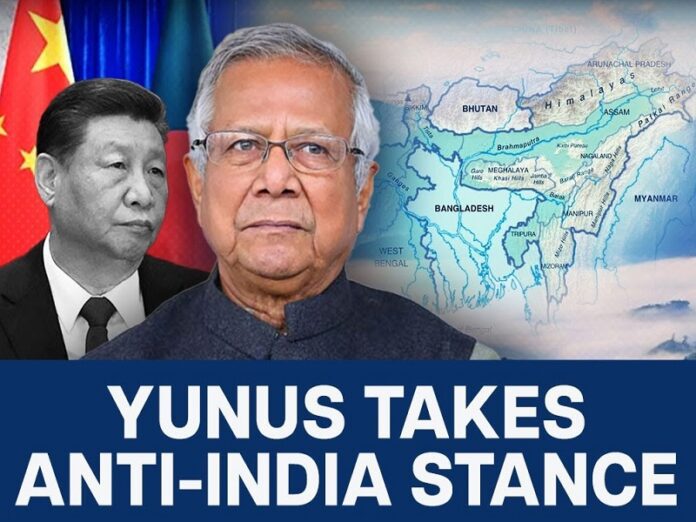All of India is talking about what interim Bangladeshi leader Muhammad Yunus said about their Northeast States during a recent trip to China. Bilateral ties plummeted after last summer’s US-backed regime change violently overthrew long-serving, strictly secular, and Indian-friendly Prime Minister Sheikh Hasina and replaced her with a collection of largely hitherto unknown anti-Indian Islamists. His latest words could worsen tensions and heighten India’s threat perceptions. Here’s what he said:
“Seven states of India, eastern part of India, called seven sisters … they are landlocked country, landlocked region of India. They have no way to reach out to the ocean. We are the only guardian of the ocean for all this region. So this opens up a huge possibility. So this could be an extension of the Chinese economy. Build things, produce things, market things, bring things to China, bring it out to the whole rest of the world.”
There are two ways to interpret Yunus’ words. The first is that his description of Northeast India as a “landlocked country” was an innocent mistake and the rest of what he said was intended to revive the Bangladesh-China-India-Myanmar (BCIM) corridor. This was supposed to be one of the Belt & Road Initiative’s (BRI) megaprojects before India quietly pulled out in protest of the China-Pakistan Economic Corridor (CPEC), which runs through the Pakistani-controlled but Indian-claimed part of Kashmir.
This explanation takes for granted Bangladesh’s continued benevolence towards India despite its radical change in government. It correspondingly reframes Yunus as a visionary multipolar leader who sees his country facilitating global trade with China via Northeast India, which would also profit from this too, and thus reduce China’s strategic reliance on the Malacca Strait. His words about Bangladesh being “the only guardian of the ocean” for Northeast India therefore aren’t meant to be threatening.
The second interpretation is that Yunus’ erroneous description was a Freudian slip revealing that he’s at least been thinking about Bangladesh once again hosting Indian-designated terrorist-separatist groups, perhaps even backed by Pakistan like before and/or in the future by China too. This could either imply the resumption of unconventional hostilities in pursuit of “Balkanization” or the wielding of a Damocles’ sword for coercing concessions from India irrespective of whether they’re connected to the BCIM.
This explanation is premised on Bangladesh’s interim authorities blaming India for floods, persecuting its Hindu minority (which recently prompted condemnation from new Director of National Intelligence Tulsi Gabbard), and one of them even sharing a provocative map online implying claims to Northeast India. All of this is proceeding in parallel with the revival of military and diplomatic ties with India’s Pakistani rival. Accordingly, this interpretation of Yunus’ intent is the most likely, and it’s the one that most Indians hold.
India might therefore strengthen border security while recalibrating its policies towards Bangladesh with a view towards treating it as a “frenemy” until Dhaka clarifies its intentions via forthcoming actions. A renewed focus on improving Northeast India’s socio-economic situation could follow too so as to preemptively avert external attempts to radicalize some separatist-inclined locals. All of this would help thwart a potentially impending Pakistani- and/or Chinese-backed Bangladeshi Hybrid War on India.
